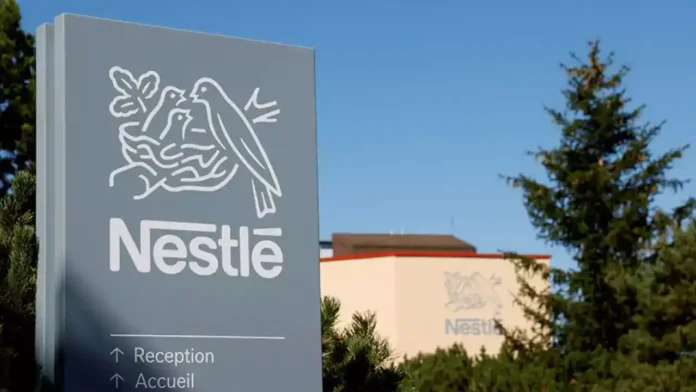Nestle has introduced two fresh initiatives in collaboration with suppliers Cargill and ETG | Beyond Beans. These projects aim to aid in the restoration of deteriorated lands surrounding cocoa farming communities through reforestation efforts.
The initiatives are part of Nestle’s broader pledge to achieve net zero emissions by 2050. These five-year partnerships are designed to diminish and eliminate carbon emissions from Nestle’s supply chains while expediting the shift to regenerative agriculture.
The initiatives are part of Nestle’s broader pledge to achieve net zero emissions by 2050. These five-year partnerships are designed to reduce and eliminate carbon emissions from Nestlé’s supply chains while expediting the shift to regenerative agriculture.
Farmers will receive various multi-purpose species of shade trees along with training on tree planting and pruning techniques. These shade trees serve multiple functions such as mitigating the harsh effects of the sun and creating moisture-rich environments essential for cocoa crop survival during dry spells. Additionally, they contribute to improved water management, on-farm biodiversity, and the absorption of carbon from the atmosphere.
Continue Exploring: Nestlé launches first-ever ethically sourced KitKat
Collectively, the projects are projected to eliminate more than 500,000 metric tonnes of carbon over a span of 20 years. This will be achieved by planting over two million shade trees on land tended by nearly 20,000 farmers across Ghana and the Ivory Coast.
Community-owned fallow land will be designated for reforestation efforts, starting with the setup of tree nurseries. These nurseries will cultivate seedlings for transplantation onto farmland. Farmers willing to participate will voluntarily sign up and should already be enrolled in Nestle’s Cocoa Plan program.
Farmers will be provided with incentives for planting the seedlings and nurturing them during the crucial initial years, vital for the trees’ survival and the project’s overall success. Regular farm visits will enable monitoring, with technical guidance and assistance offered as needed.
Monitoring strategies will oversee both the quantity of trees planted and the associated amount of CO2 sequestered. Additionally, non-carbon benefits arising from the projects, such as the impact, suitability, effectiveness, and efficiency of natural landscape restoration efforts, will be monitored.
High-resolution satellite imagery will be employed for ongoing monitoring to ensure the sustained growth and prosperity of the planted trees over the long haul.
According to Darrell High, Nestle’s global cocoa manager, “These projects represent significant milestones in our path towards achieving net zero emissions. We are committed to addressing our emissions right from the farms we source from.”
Continue Exploring: Nestlé targets 70% emission reduction: Strikes green transition deal with shipping giants
“The preservation of forests for sustainability depends greatly on suppliers like Cargill and ETG | Beyond Beans showing full commitment. Equally important is the active engagement of local communities, whose direct influence over forest areas is vital for tailoring land-use solutions to meet local needs.”
Over two-thirds of Nestle’s greenhouse gas (GHG) emissions originate from ingredient sourcing. Nestlé has pledged to plant and cultivate 200 million trees in the regions from which it sources globally by 2030. It targets a 20% reduction in absolute GHG emissions compared to its 2018 baseline by 2025, and a 50% reduction by 2030. In 2023, the company achieved a net reduction in emissions of 13.58%.





